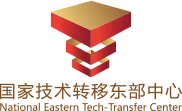After the formal landing of the rules of the board, the SSE has recently started the test exercise of the issuance of the board and the countdown to the opening of the board market has begun. How does this system, which will have a great impact on China's capital market, work in practice? And what are the highlights and breakthroughs? What are the views of the market parties? Let's take a look!
Policy release.On January 30, the much-anticipated CRE Board received heavy news - CSRC and SSE released nine documents in succession announcing a large number of related rules. In the evening of the same day, the CSRC and the SSE released a series of documents such as "Implementation Opinions on the Establishment of the Board and Pilot Registration System on the Shanghai Stock Exchange" and "Rules for the Examination and Approval of the Issuance and Listing of Shares on the Board of Shanghai Stock Exchange".
No. 1. How institutional design works
The series of documents released have clear details on the listing conditions, up and down limits, investor limits, registration system implementation procedures and timeframes for the board.
>>>>What companies get on?
For the first time, unprofitable enterprises, companies with different share rights and eligible red-chip enterprises are explicitly allowed to apply for listing on the board, which places more emphasis on their technological innovation capabilities and sets multiple conditions such as market capitalization, revenue, net profit, R&D investment and cash flow.
>>How does the registration system work?
The enterprise will submit the listing application materials to the Shanghai Stock Exchange, the examination will be completed within 3 months, and after the examination and approval by the Shanghai Stock Exchange, it will be submitted to the CSRC for registration, in principle, the CSRC will give a reply on whether it agrees to the registration within 20 days.
>>>> The audit is in two steps.
Step 1 - The SSE conducts a comprehensive review of the listing application, focusing on whether the information disclosure requirements have been implemented.
Step 2 - After the issue and listing audit is completed, the exchange will submit the audit opinion and the company's application documents to the Securities and Futures Commission (SFC), which will make the decision to grant registration.
>>How is the issue price set?
According to the relevant person in charge of the SSE, considering the higher investment experience and risk tolerance requirements of investors on the board, the direct pricing method was cancelled and the market-based inquiry pricing method was adopted, limiting the initial public offering inquiry to seven types of professional institutions such as securities companies and fund companies.
>>How does the exit flow?
The board and the registration system pilot to promote, must be unimpeded exit. The relevant person in charge of the SSE introduced that there are "three stricter" in the design of the delisting system of the board: stricter standards, stricter procedures and stricter implementation.
>>How do you trade?
Unlike the existing market, the limit on the rise and fall of the stock on the board has been relaxed to 20%, and there is no limit on the rise and fall of the stock in the first five trading days after the IPO. At the same time, the board introduced after-hours fixed price trading, no longer requires a single reporting number of 100 shares and its integer multiples, the minimum single reporting number is increased to 200 shares, which can be incremented by 1 share.
>>>>Who can invest in the CRE?
Individual investors with an average daily stock and capital of $500,000 in their account and 24 months of trading experience can invest in the CRE.
Institutional highlights and breakthroughs
1, the positioning of the enterprises on the board is clear. It focuses on supporting new-generation information technology, high-end equipment, new materials, new energy, energy conservation and environmental protection as well as biomedicine and other high-tech and strategic emerging industries.
2. Conditions for listing on the board are more inclusive. More emphasis will be placed on the technological innovation capability of enterprises, and enterprises that are in line with the positioning of the board and have not yet made profits or have accumulated uncompensated losses will be allowed to list on the board.
3. The division of labor is clear, and the pilot registration system of the board is being steadily promoted. The SSE is responsible for the audit of the issuance and listing of the board, while the CSRC is responsible for the registration of the board's shares. The CSRC supervises the audit work of SSE and strengthens the whole process of supervision before, during and after.
Improve the basic system of the capital market in five aspects: constructing a market-based issuance and underwriting mechanism for shares on the board; strengthening the supervision of information disclosure; establishing a more market-oriented trading system based on the characteristics of listed companies on the board and the requirements of investor appropriateness; establishing an efficient M&A and restructuring mechanism; and strictly implementing the delisting system.
5、Information disclosure to guide scientific and technological innovation: the board explicitly requires issuers to disclose scientific research level, scientific research personnel, scientific research funds investment and other relevant information, and urge and guide issuers to focus on raising funds to invest in the field of scientific and technological innovation.
6. Improve supporting reform measures: strengthen the continuous supervision of listed companies on the board; strengthen the responsibility of intermediaries; crack down on fraudulent issuance, misrepresentation and other illegal activities to protect the legitimate rights and interests of investors; in addition, the CSRC will strengthen the interface between administrative law enforcement and the judiciary, and promote the improvement of relevant laws and regulations.
No 3. How market parties perceive
>>>>"Inclusive" institutional design creates "cradle" of growth
Yang Delong, chief economist of Qianhai open source fund, said that through institutional innovation, the board will be built as a "cradle" for the growth of science and technology enterprises, so that local investors will not miss companies that may grow into technology leaders in the future.
>>>>New trading system requires investors to be more professional
Sun Jianbo, chief economist at China Reading Capital, writes that a new value judgment system and a new trading system will test investors differently.
>>>>Focusing on "incremental" to alleviate market fears expectations
Guo Shiliang, a financial commentator, said that the concept of incremental reform will help alleviate the market's concern about the expected diversion of liquidity from the stock on the board. At the same time, companies selected for the board tend to have good development potential, strong growth capability and high return-on-investment expectations, among other characteristics. The recognition of these characteristics will bring additional liquidity to the market, thus enhancing the core competitiveness of the capital market.




